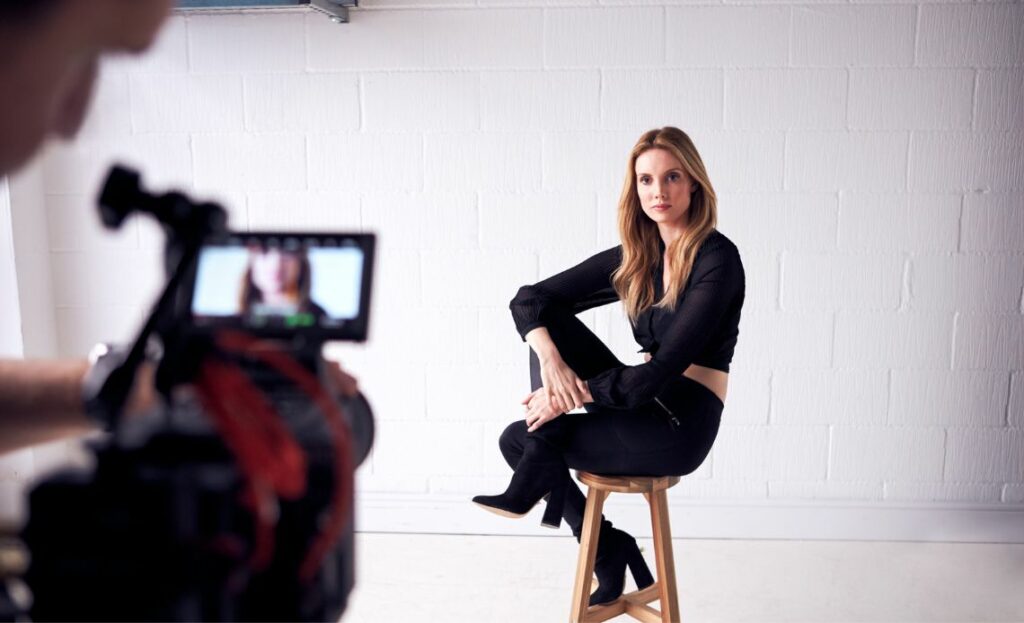The Ultimate Guide to Commercial Video Modelling

Effective planning and execution of a commercial video modeling strategy are essential to boost sales for your product or service. Given its widespread popularity, businesses frequently employ commercial video modeling as a powerful approach to create captivating and impactful video content to engage their target audience and drive favorable outcomes. By leveraging the art of commercial video modeling, you can craft compelling videos that pique interest and effectively convey the value and appeal of your offerings, ultimately contributing to increased sales and business growth.
What is Commercial Video Modelling?
Commercial video modeling aims to create a video that persuasively presents a product, service, or brand. Planning, writing, outlining, storyboarding, filming, editing, and releasing are all part of the process. The end goal is to make a video that gets people to pay attention, gets them invested emotionally, and gets them to take action.
Why Use Commercial Video Modelling?
In today’s digital age, consumers have more choices than ever before. There is a pressing need for businesses to develop novel strategies to differentiate themselves from rivals and attract and retain customers. One efficient method of doing so is through commercial video modeling. It helps companies present their wares in a way that is both aesthetically pleasing and emotionally resonant, making a strong case for their customers to buy.
The Benefits of Commercial Video Modelling
The use of commercial video models in advertising has many advantages for firms. Important advantages include:
- Increased Brand Awareness: A well-produced video can raise consumer awareness of a company’s brand in several ways.
- Enhanced Engagement: Videos are more accessible to watch and recall than written materials.
- Improved Conversion Rates: Videos have been shown to convert viewers into buyers much faster than other content types.
- Greater Reach: Videos might reach more people than other material formats because of their accessibility.
- Improved Search Rankings: The likelihood of a video doing well in search results is higher than it is for other types of material.
The Process of Commercial Video Modelling
Creating a successful commercial video requires a well-defined process that includes pre-production, production, post-production, and distribution. Let’s take a closer look at each of these stages.
Pre-production
Pre-production is the planning phase of commercial video modeling. It involves the following key steps:
Planning and Scriptwriting
During pre-production, you should establish your video’s purpose, identify your audience, and write a script outlining the key messages you want to get through.
Storyboarding
Developing a visual outline of your script is called “storyboarding.” Shots and camera angles for the final video can be pre-planned with this tool.
Casting and Location Scouting
Casting involves selecting actors or presenters to appear in your video. Location scouting consists in finding the right location to shoot your video.
Equipment and Technical Requirements
Before you begin shooting, check that everything you’ll need is available. Cameras, lights, and microphones, among other things, could be provided.
Production
During the production process, your commercial video is filmed. Important measures include:
Shooting
The video that will be used in the final product is captured during the shooting process. Getting the proper pictures and angles may need more than one try.
Lighting and Sound
Lighting and sound are crucial elements of any video production. Good lighting ensures your video looks professional, while good sound ensures your message is heard clearly.
Directing and Coaching Actors
Directing involves guiding the actors or presenters to deliver their lines and actions most effectively. Coaching consists in helping them to give a natural and engaging performance.
Post-Production
In post-production, the raw material captured in production is edited and polished. Important measures include:
Editing and Special Effects
During the editing process, you will select the best shots and arrange them in a way that tells an engaging story using those shots. At this point in the process, adding special effects can also improve the video’s aesthetic appeal.
Music and Sound Effects
Adding music and other sound effects to the video can give it a greater emotional impact and make the viewing experience more enjoyable overall.
Color Grading and Final Touches
Color grading involves adjusting the colors and tones of the video to ensure consistency and enhance the visual appeal. Final touches, such as text overlays or graphics, may also be added at this stage.
Marketing and Distribution
After finishing your commercial video, it’s time to get the word out and show it to as many people as possible. Important measures include:
- Uploading the video to your website or the many social media sites you use
- Distributing the video to your email list and through other marketing channels
- Conducting paid advertising efforts to market the video to a more extensive audience
- Performing an analysis of the video’s results and making adjustments where appropriate
Common Mistakes to Avoid in Commercial Video Modelling
When making promotional videos, many companies make mistakes in several ways. Among these are:
- Video makers often make these mistakes, not deciding on a specific goal for the video
- Making a video that is either too long or unclear
- Failing to connect with the audience emotionally
- Ignoring search engine optimization
- Using subpar tools or procedures to create the video
Best Practices for Successful Commercial Video Modelling
Here are some guidelines to keep in mind if you want your commercial video to do well:
- Create an engaging script that conveys a tale and elicits emotion
- Determine the video’s intended function and audience, then write a script that engages and moves them.
- Put top-notch tools and methods into production.
- Search engine optimization (SEO) for videos
- The video should be promoted and disseminated through various means.
FAQs
What is the best length for a commercial video?
The goal, audience, and length of a commercial video vary. Commercials should be under two minutes to maximize audience interest.
How can I ensure my video is optimized for search engines?
To optimize your commercial video for search engines, consider the following tips:
- Use relevant keywords in the video title, description, and tags
- Include a transcript of the video for search engines to index
- Host the video on your website or a video hosting platform with good SEO practices
- Encourage engagement with the video, such as through comments and shares
Do I need a professional video production company to create a commercial video?
Hiring a professional video production company can improve the quality of your commercial video. Professional videographers have the skills, equipment, and technical knowledge to create a business promotion video.
How can I measure the success of my commercial video?
To measure the success of your commercial video, consider the following metrics:
- Views: The number of times the video has been viewed
- Engagement: The number of likes, comments, and shares the video has received
- Conversion rates: The number of viewers who took a desired action after watching the video, such as making a purchase or filling out a form
- ROI: The return on investment for the video, taking into account the cost of production and any revenue generated as a result of the video
Can I use stock footage in my commercial video?
Stock footage can be used in a commercial. If you use stock footage, you need to ensure you have the proper permissions to use it and that you aren’t breaking copyright laws. Professionally filmed, high-definition footage may do wonders for your video’s aesthetic appeal and viewer engagement.
Conclusion
The use of commercial video modeling as a promotional strategy is a potent tool for firms that want to promote their goods or services. You can produce a video that attracts your target audience, tells an enticing story, and ultimately drives conversions if you follow the steps provided in this tutorial and put them into action.





